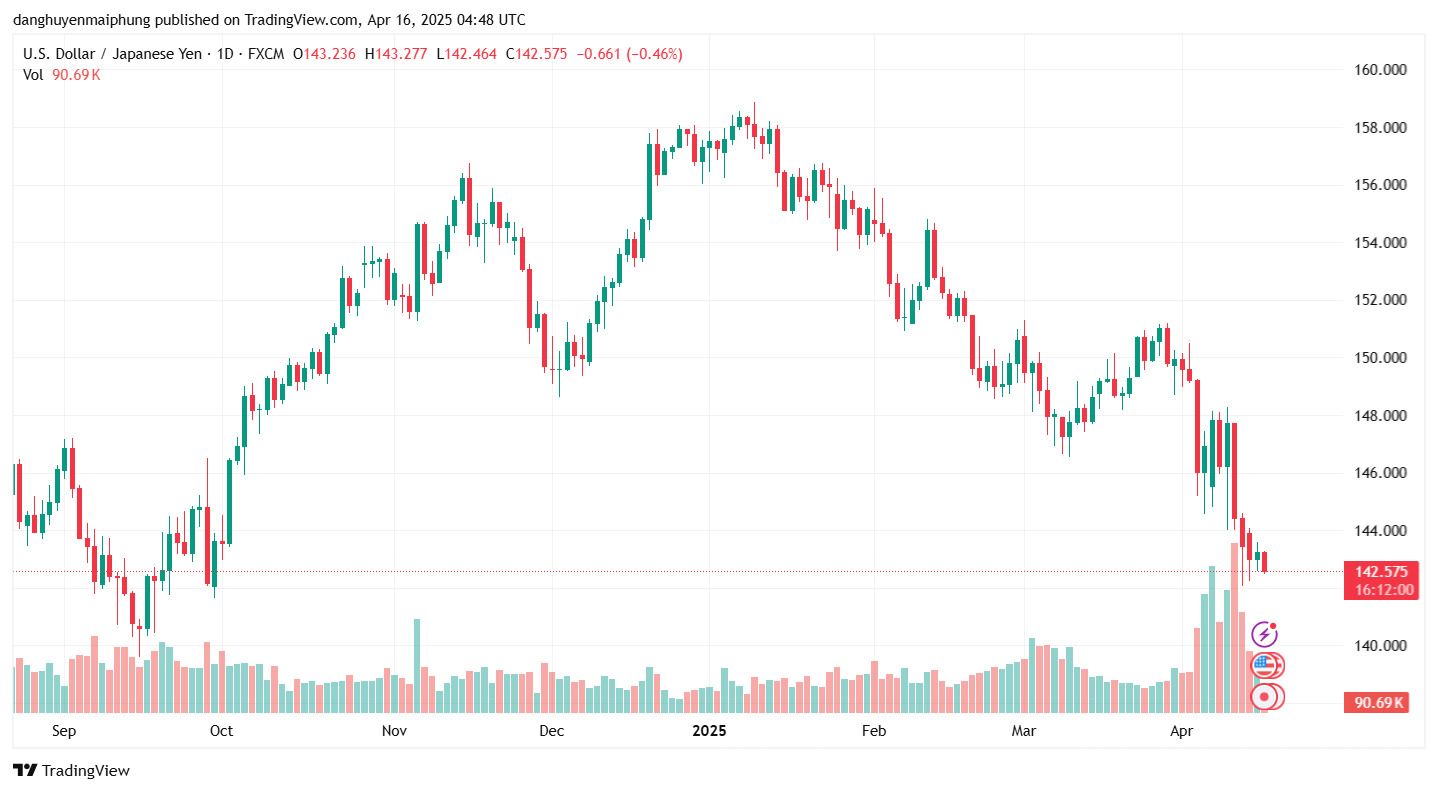The yen exchange rate today
As noted by labor, on April 16, the Japanese Yen (JPY) continued to increase the price compared to the USD, pulling the USD/JPY exchange rate gradually back to the milestone between 142.00. The main reason comes from the fear of escalating related to US trade policies, causing investors to rush into safe assets such as Yen.
Latest update, JPY exchange rate compared to USD currently fluctuates in the range of 142.57 USD/JPY; That is 1 JPY changed about 142 JPY.

The yen is expected to continue to increase
According to FXStreet, the instability from the US - especially conflicting statements from President Donald Trump - are creating a wave of concern in the market. Although the Trump administration recently announced that it would exempt taxes for some electronic items imported from China such as phones and computers, Mr. Trump also threatened to impose additional taxes on other strategic industries such as semiconductors and pharmaceuticals in the coming time. In addition, the ability to tax the automotive industry is still unclear.
All these developments have promoted the need to hide in the Yen - one of the traditional safe currencies.
At the same time, the market is also expecting that the Central Bank of Japan (BOJ) will continue to raise interest rates by 2025. This belief is strengthened after the positive economic data is announced: Japanese core machinery orders in February increased by 4.3%, much higher than forecast, and is the highest level within a year.
In particular, orders from the manufacturing industry increased by 3%, and the non -production sector increased sharply to 11.4%. These figures show that the business environment is recovering, can promote investment and increase inflation pressure - the factor that makes BoJ have a reason to continue raising interest rates.
In the opposite direction, the dollar continues to undergo pressure as investors lose their faith in the US economy. The recent sale of the US Treasury bond market shows anxiety about growth, especially when the Trump administration's trade policy is expected to have a negative impact. In addition, the expectation that the US Federal Reserve (Fed) will cut interest rates in June and a total of 100 basic points this year makes the dollar more attractive.











